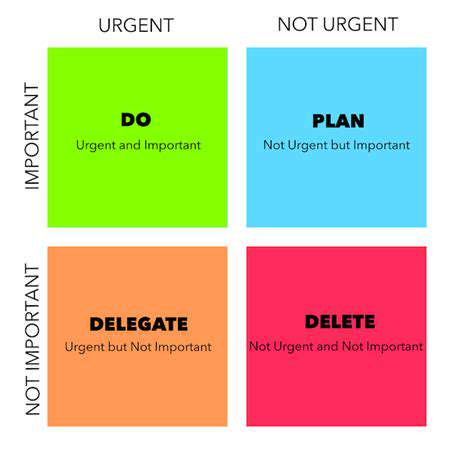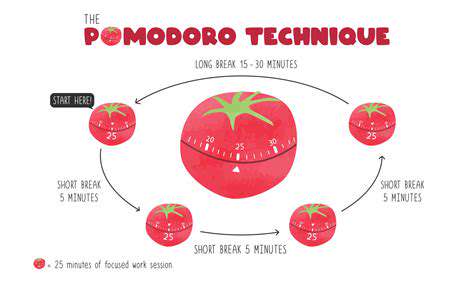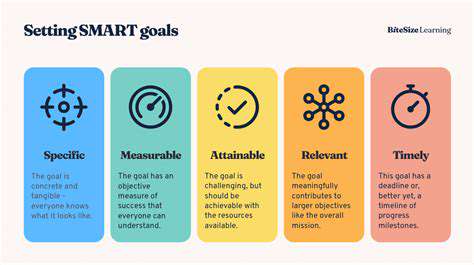Boost Your Focus and Productivity with the Pomodoro Technique
How the Pomodoro Technique Works
Understanding the Basics
The Pomodoro Technique is a time management method developed by Francesco Cirillo in the late 1980s. The core principle is to break work into intervals, traditionally 25 minutes in length, separated by short breaks. These intervals are known as "Pomodoros," named after the tomato-shaped kitchen timer that Cirillo used during university.
During each Pomodoro, the focus is on completing a specific task or set of tasks without interruption. This structured approach helps minimize distractions and makes it easier to dive deep into work. After four Pomodoros, a longer break of 15-30 minutes is taken, allowing the brain to rest and recharge.
Implementing the Pomodoro Technique not only aids in improving concentration but also promotes a more active and mindful approach to work. By breaking down tasks into manageable segments, individuals often find it less daunting to start and maintain momentum.
Benefits of Using the Pomodoro Technique
One of the primary benefits of the Pomodoro Technique is its ability to enhance focus. Knowing that there is a set time limit encourages individuals to prioritize their work and allocate attention more efficiently. This focused approach is particularly helpful for complex tasks that require sustained attention.
Moreover, the regular breaks interspersed between work sessions help combat fatigue. These short pauses allow the mind to rest, reducing the risk of burnout and improving overall productivity. They also provide an opportunity for physical movement, which can further energize the work session.
Another significant advantage is the increased sense of accomplishment. Each completed Pomodoro serves as a small victory, boosting motivation and reinforcing a sense of progress. This cumulative effect can lead to improved self-discipline and a greater commitment to long-term goals.
Tips for Implementing the Technique
To successfully incorporate the Pomodoro Technique into your routine, start by selecting a task to work on and setting a timer for 25 minutes. It’s essential to eliminate distractions before starting; this may include silencing notifications on devices or finding a quiet workspace.
Once the timer starts, focus solely on the task at hand, and avoid any interruptions. If distractions do arise, jot them down on a notepad and address them during the break. After the 25 minutes, take a short 5-minute break to stretch, hydrate, or relax before diving into the next interval.
As you become more accustomed to the technique, consider adjusting the length of your Pomodoros and breaks based on your personal productivity rhythms. Some individuals may find that they work better with longer or shorter intervals, so feel free to customize the method to suit your needs.
The Benefits of the Pomodoro Technique

The Structure of the Pomodoro Technique
The Pomodoro Technique is built around work sessions, traditionally lasting 25 minutes, followed by a short break of 5 minutes. This cycle allows you to maintain a high level of focus without feeling overwhelmed. After completing four Pomodoros, you take a longer break of about 15 to 30 minutes, which helps to recharge your mental energy.
Each work session is known as a "Pomodoro," which is derived from the Italian word for tomato, named after the tomato-shaped kitchen timer. By establishing this structure, you create a rhythm that can enhance your overall productivity. It's essential to minimize distractions during these sessions to maximize the effectiveness of this technique.
Once you become accustomed to the Pomodoro Technique, you can adjust the duration of your sessions and breaks based on what works best for you. Whether you stick to the classic 25-minute format or modify it, the key is to maintain a consistent approach. This flexibility makes the Pomodoro Technique adaptable for various tasks and personal preferences.
Improved Focus and Decreased Burnout
One of the main advantages of the Pomodoro Technique is its ability to improve focus. By breaking down work into manageable intervals, you can dedicate your full attention to a single task. This focused work reduces the likelihood of distractions and fosters a sense of accomplishment as you complete each Pomodoro.
Another significant benefit is the reduction of burnout. Working in short bursts allows your brain to rest and rejuvenate during breaks. Regular intervals of rest prevent mental fatigue, enabling you to sustain high productivity levels over longer periods.
The method also encourages you to evaluate your workflow regularly. After each Pomodoro, you can reflect on what went well and what can be improved. This analysis helps you refine your approach, leading to a more efficient use of time and energy.
Enhancing Time Management Skills
Implementing the Pomodoro Technique can vastly improve your time management skills. By organizing your tasks into Pomodoros, you become more aware of how much time you spend on different activities. This awareness allows you to allocate your time more effectively based on your priorities.
The technique also promotes better planning and task estimation. As you assess how many Pomodoros are required for specific tasks, you can set realistic goals. Achieving these goals can boost your confidence and encourage you to take on more challenging projects.
Lastly, practicing the Pomodoro Technique can help you cultivate discipline and focus. As you commit to working in intervals, you learn to resist the temptation of multitasking. This single-tasking approach not only aids concentration but also leads to higher quality work.










